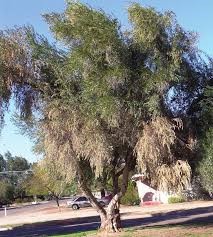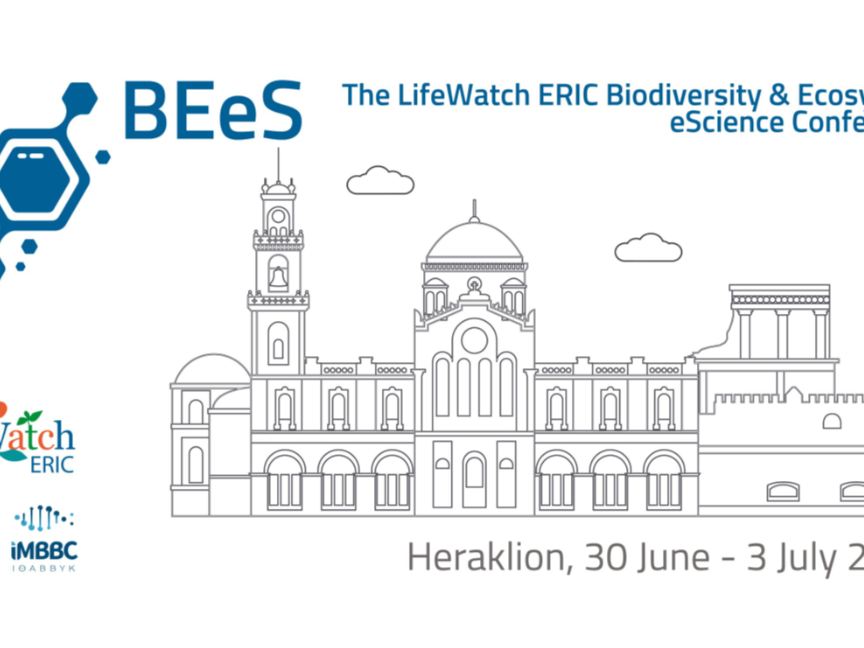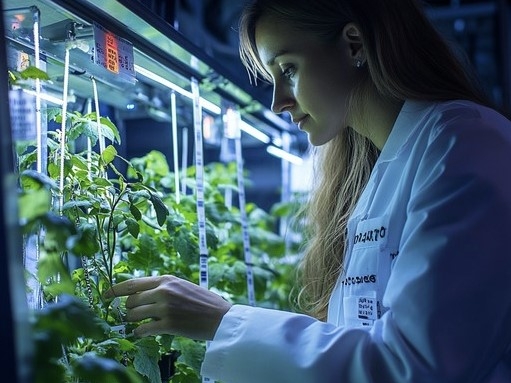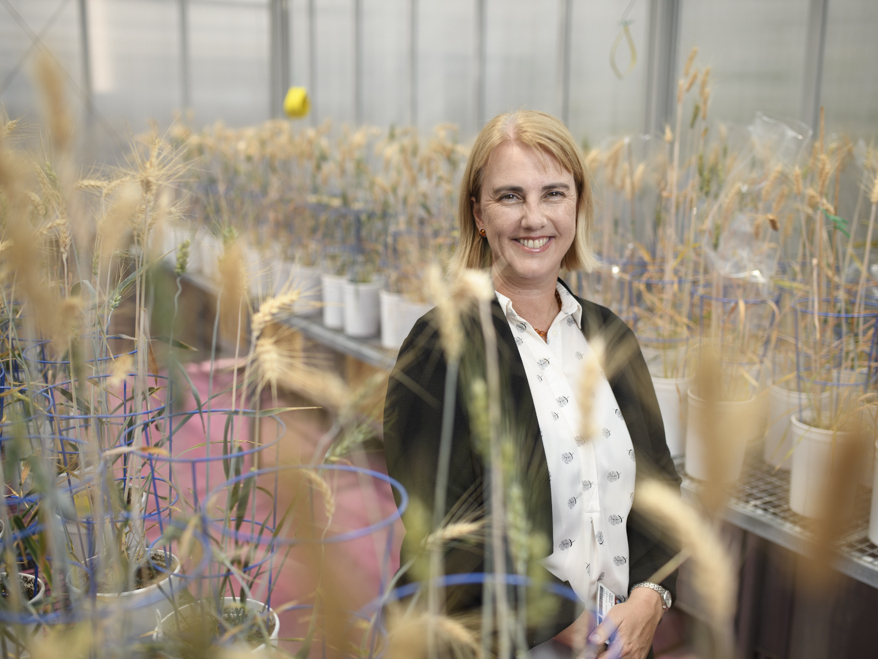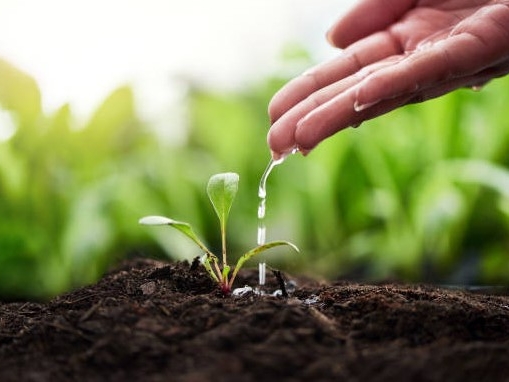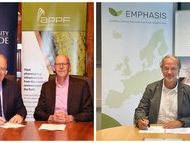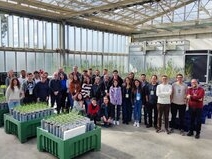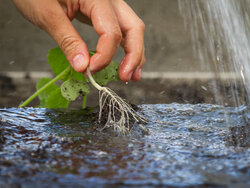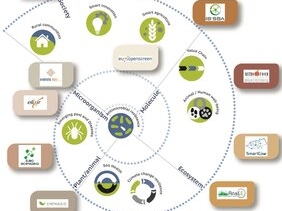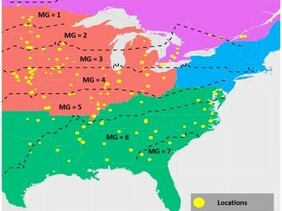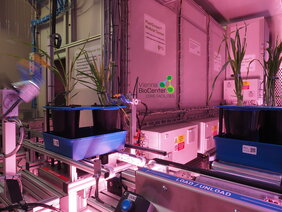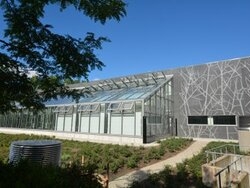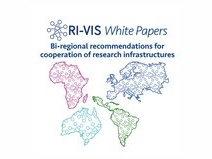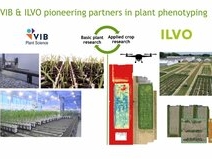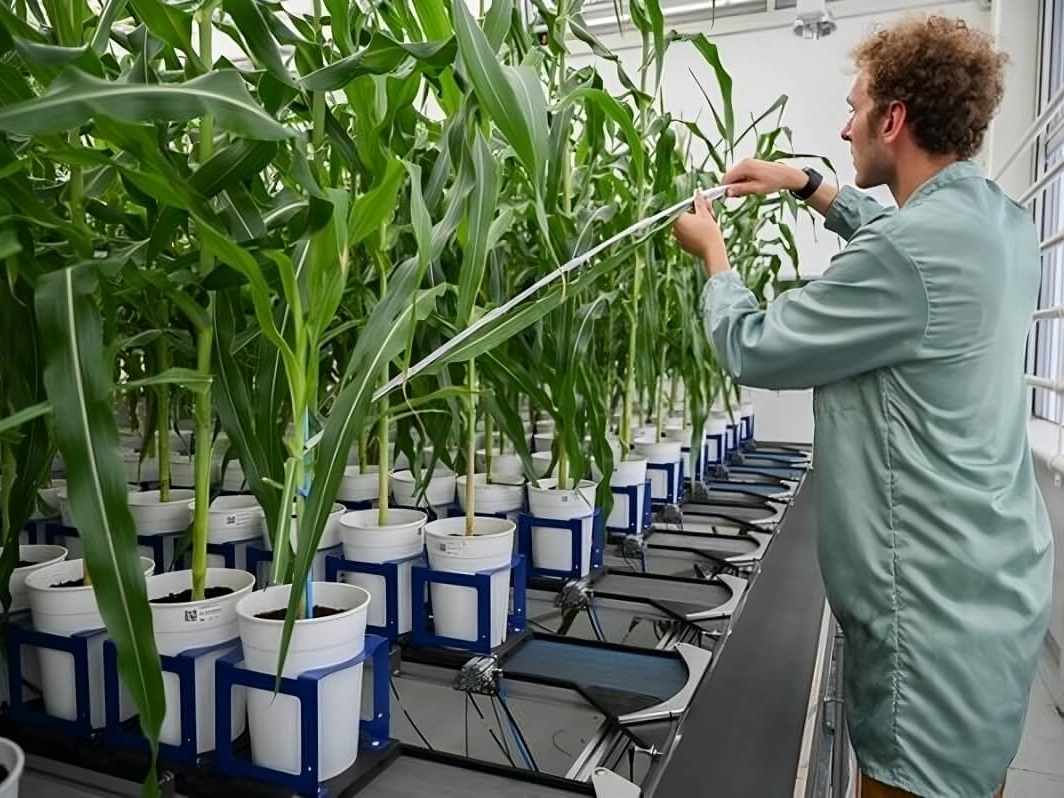Olives and olive oil are important for the European Union, in particular those Member States with Mediterranean coastlines. Spain alone produces 36% of the world’s olive oil, and the sector is a major contributor to the economies of Greece, Italy, and Portugal, and is also important to Cyprus, France, and Slovenia. Additionally, Italy and Spain are the largest consumers of olive oil in the EU, with an annual consumption of around 500,000 tons each, while Greece has the biggest EU consumption per capita, with around 12 kg per person per year. In total, the EU accounts for around 53% of world consumption. In terms of trade, the EU represents roughly 65% of world exports of olive oil. But the economic benefits of olive oil production, and of the production of table olives, come at a cost. Olive growing has become more intensive over the last three decades and is using an increasing amount of agricultural land. This intensification and expansion in the cultivation of olives have contributed to the significant spread and amplified the consequences of many diseases affecting olive trees. Among those, the most important fungal problem is verticillium wilt. The solutions available to tackle Verticillium’s effects require the accurate classification of trees in the early stages of infestation—a task that is impractical with traditional means but also very difficult, as early stages are almost impossible to distinguish by visual inspection.
All the above constitute the underlying context of MyOliveGroveCoach project, which utilizes multispectral imaging from unmanned aerial vehicles to develop an olive grove monitoring system based on the autonomous and automatic processing of the multispectral images using computer vision and machine learning techniques. The goal of the system is to monitor and assess the health of olive groves andprovide novel solutions for the early detection of Verticillium wilt and its spread. Olive cultivation in Greece represents a large percentage of the total agricultural land and a very large percentage of agricultural land that would be, considering territorial characteristics such as low fertility and sloping, difficult or economically impractical to exploit with other crops. Therefore, the effects of Verticillium are quite severe also from an economic point of view since it contributes to a serious reduction in olive
productivity, plant capital destruction and subsequently leads to derivative unwanted effects such as increased soil degradation. Verticillium wilt causes a gradual malfunction and eventually a complete blockage of the vessels of the tree, in part or in whole, interrupting the movement of water from the roots to the leaves, resulting in interruption of the water supply in the affected part of the tree. This reduction in water supply leads to nutritional deficiencies and even starvation of the branches. Before the complete blockage and total necrosis of the affected tissue associated with the part of the root that has been infected, there precedes a stage of temporary water stress, a reversible stress, which can be mainly attributed to the closure of the stomata of the affected plant tissue [2], stunting, chlorosis or yellowing of the leaves, necrosis or tissue death, and defoliation. Internal vascular tissue discoloration might be visible when the stem is cut.[1] In Verticillium, the signs and effects will often only be on the lower or outer parts of plants or will be localized to only a few branches of a tree. The severity of the infection plays a large role in how severe the signs are and how quickly they develop.
In the preliminary stage of early wilt infection, the natural process of photosynthesis is impaired, since the leaf pigments that are responsible for the canopy photosynthetic activity (mainly chlorophyll) are unable to function properly [3]. This impediment of the photosynthetic activity leads to a subsequent degradation of the canopy pigment percentage which results in a reduction of plant canopy reflectance in the Near Infrared wavelengths. As the infection progresses and because of the slow degradation of chlorophyll in the canopy the reflectance in the Green wavelengths (640nm) is also affected leading to light-green discoloration of the leaves; a discoloration that even in this stage of verticillium infection is very subtle and very difficult to detect with the naked eye, especially in there where photosynthetic activity has been hampered but the percentage of chlorophyll pigments in the canopy is still adequate for a functional photosynthetic activity.
Thermal and multispectral surveying has shown high correlations of leaves’ spectral characteristics with the degree of infestation, as measured in the 11 point [4]. On this basis, using Remote Sensing technologies enabled by the advent of small format high resolution multispectral sensors carried by unmanned aerial vehicles with autonomous mission capabilities. The team comprised of Kostas Blekos, Anastasios Tsakas, Aris Lalos, Ioannis Evdokidis, Dimitris Alexandropoulos, Christos Alexakos, Athanasios Kalogeras (Industrial Systems Institute, Athena Research Center, Patras, Greece), Sofoklis Katakis, Andreas Makedonas, Christos Theoharatos (Irida Labs S.A., Patras, Greece), Christos Xouris (Gaia Robotics S.A., Patras, Greece) created the platform “My Olive Grove Coach” (MyOGC). The main goal of MyOGC is the development of an intelligent system that will monitor olive groves and support farmers in the detection and treatment of Verticillium, using multispectral sensors and spectrophotometers. All raw data collected by the dedicated multispectral sensors are algorithmically processed and augmented by machine learning techniques. Finally, the end-results are visualized in a user friendly way so that producers and agronomists have access to reliable, actionable and customizable data, according to the principles of human-centered design.
With MyOGC it will be possible to (a) collect actionable data on the progress and spread of tree infestation; (b) quickly detect the problem using innovative signal processing methods and multispectral imaging and computer vision, in combination with machine learning techniques, thereby providing accurate spatial identification of affected trees; (c) guide the producers/agronomists when required, with a user-friendly communication and decision-making support system, with maps of quantitative and qualitative characteristics of the grove, that will help them optimize their olive management practices thus leading to (d) better yield quantity and quality while achieving a lesser environmental footprint of agricultural practices.
References
[1] Herder, M.D.; Moreno, G.; Mosquera-Losada, R.; Palma, J.; Sidopoulou, A.; Santiago Freijanes, J.J.; Crous-Duran, J.; Paulo, J.A.; Tomé, M.; Pantera, A.; et al. Current Extent and Trends of Agroforestry in the EU27. Available online: www.agforward. eu/index.php/en/current-extent-and-trends-of-agroforestry-in-the-eu27.html (accessed on 30 November 2020).
[2] Calderón, R.; Navas-Cortés, J.A.; Lucena, C.; Zarco-Tejada, P.J. High-resolution airborne hyperspectral and thermal imagery for early detection of Verticillium wilt of olive using fluorescence, temperature and narrow-band spectral indices. Remote Sens. Environ. 2013, 139, 231–245. [CrossRef]
[3] Fradin, E.F.; Thomma, B.P. Physiology and molecular aspects of Verticillium wilt diseases caused by V. dahliae and V. albo-atrum. Mol. Plant Pathol. 2006, 7, 71–86. [CrossRef] [PubMed]
[4] Zartaloudis, Z.; Iatrou, M.; Savvidis, G.; Savvidis, K.; Glavenas, D.; Theodoridou, S.; Kalogeropoulos, K.; Kyparissi, S. A new 11-point calibration scale of Verticillium wilt of olive verified by thermal remote sensing and plant analysis. In Proceedings of the 17th PanHellenic Plant Pathology Conference, Volos, Greece, 13–18 October 2014
December 9, 2025
The Crete Declaration: Uniting Science for One Health
At the BEES Conference in Crete, European research infrastructures united behind the One Health approach, pledging stronger…
November 20, 2025
New publication outlines global vision for plant phenotyping collaboration
A new commentary in The Plant Phenome Journal co-authored by EMPHASIS leadership explores the future role of regional…
November 20, 2025
EMPHASIS Welcomes Dr Susie Robinson as Interim Director General, Effective January 2026
EMPHASIS appoints Dr Susie Robinson as its Interim Director General, effective January 2026, following an international search.…
October 24, 2025
The Flemish Government has officially announced its dedicated support for EMPHASIS ERIC
We are thrilled to share that the government has approved a 'Host Country Premium' of €1.8 million for the first five years of…
October 22, 2024
European Life Science RIs Position Paper on FP10
Driving Innovation and Collaboration: A Strategic Vision for European Life Science Research Infrastructures in Framework…
July 2, 2024
AgroServ’s Second Call for Proposals is Now Open!
We are excited to announce the opening of AgroServ’s second call for proposals. AgroServ provides access to 143 services from…
February 20, 2024
Horizon Europe-funded MICROBES-4-CLIMATE project kicks-off
31 Partners from 13 Countries unite to address climate change risks for biodiversity and for agricultural and forestry…
December 4, 2023
International collaboration targets global food challenges
The memorandum of understanding formalises a commitment to cooperation in enabling crop improvement via advancements in plant…
November 20, 2023
ALL-Ready – The EU Agroecology Living Lab and Research Infrastructure Network
The ALL-Ready pilot network is essentially a small-scale testbed to experiment, and to provide feedback on the various tools,…
September 20, 2023
AgroServ – First Call for Proposals Open to Scientists from Academia and the Industry
The Horizon Europe project AgroServ, with the participation of EMPHASIS, is pleased to announce the official launch of its…
May 8, 2023
EMPHASIS training on affordable phenotyping in Matera-Metaponto, Italy
It enabled an in depth discussion between the course participants and plant phenotyping experts from EMPHASIS member countries.
March 16, 2023
SusCrop / FoPD video contest on sustainable crop production
National funders in the European Research Area Network on Sustainable Crop Production (SusCrop ERA-net) opened the video…
February 22, 2023
IPPS Research Topic in frontiers
IPPS 2022 - Plant Phenotyping for a Sustainable Future: IPPN, together with WUR, has launched a research theme on borders.
February 15, 2023
Call for contributions to a special Issue: Phenotyping functional traits in plants
Plant phenotyping has seen rapid development in methods and technologies over recent decade leading to the establishment of…
February 14, 2023
European research and innovation programmes 2014-2027
The public consultation on the EU’s Horizon research and innovation programmes 2014-2027 will be open until 23 February. This…
January 17, 2023
EMPHASIS Implementation Project „EMPHASIS-GO” has started
Once operational, EMPHASIS is intend to provide multiple high-level services for the plant phenotyping and related communities…
November 30, 2022
Phenet
Europe urgently needs to find pathways towards agroecological transition of agroecosystems in support to food security, climate…
June 29, 2022
New book: Advances in plant phenotyping for more sustainable crop production
The book reviews the wealth of research on advances in plant phenotyping to meet this challenge, including new technologies…
March 7, 2022
EMPHASIS contributes to European project AI4Life on Artificial Intelligence
Machine learning (ML) has enabled and accelerated frontier research in the life sciences, but democratised access to such…
March 1, 2022
EMPHASIS contributes to European project AgroServ on Agroecology
The Horizon Europe project AgroServ, led by AnaEE and CNRS, gathers more than 70 partners and has recently been granted of 15M€…
December 6, 2021
EOSC-Life: Workflowhub
September 15, 2021
Opinion Paper: EU Consortium calls for “Designing the Crops for the Future; The CropBooster Program”
The authors call for international action and propose a pan-European research and innovation initiative, the CropBooster…
September 10, 2021
MLCAS2021 launches Crop Yield Prediction Challenge
In this competition, you will utilize a dataset consisting of 103,365 performance records over 13 years and 150 locations with…
August 19, 2021
New Special Issue in Plant Phenomics
Plant Phenomics, a Science Partner Journal, is now accepting submissions for a special issue titled Advances in Proximal…
June 23, 2021
Austria: New high-throughput phenotyping platform at Vienna BioCenter Core Facilities (VBCF)
The PHENOPlant phenotyping platform is designed for non-invasive, morphometric and physiological high-throughput phenotyping of…
June 14, 2021
Sweden: A virtual tour of the Biotron at SLU Alnarp
On 27 May 2021, NordPlant organized a virtual tour of the Biotron at SLU Alnarp. The Biotron is a facility for modern plant…
May 4, 2021
Italy: Successful first Phen-Italy call for access to plant phenotyping infrastructures
Great success of the Phen-Italy call for access to the Italian plant phenotyping infrastructures! More than twenty applications…
April 12, 2021
Greece: Lab-in-the-field, multi-spectral imaging technology for early warning of plant stress and pathologies
The Mediterranean Agronomic Institute of Chania, the Hellenic Agricultural Organization Dimitra and QCELL, the inventor of…
April 6, 2021
New tools for data sharing in plant research
Three new data management tools designed to help plant researchers with data analysis, visualisation and integration following…
March 25, 2021
Italy: Phen-Italy launches first call for access to national phenotyping infrastructures
The Italian Plant Phenotyping Network Phen-Italy has launched a call to fund access to plant phenotyping participating…
March 25, 2021
EOSC-Life publishes midterm Achievements Brochure
The European Open Science Cloud project EOSC-Life, which EMPHASIS participates in, has just published a digital brochure…
February 18, 2021
RI-VIS publishes three white papers on international cooperation between research infrastructures
As part of the RI-VIS project, a team of European research infrastructures, led by EMPHASIS, has just published three white…
February 16, 2021
Belgium: VIB and ILVO jointly obtain regional funding to establish the ‘EMPHASIS-Belgium’ consortium as national node of EMPHASIS
With the ambition of “phenotyping future crops”, a new consortium - EMPHASIS-Belgium - has been established as the Belgian node…
February 10, 2021
Plant Phenotyping for a Sustainable Future
Contributions to the special issue are welcome and may include research papers as well as review articles. Authors should…
February 5, 2021
RI-VIS Publishes White Paper on African-European Research Infrastructure Cooperation
A team of European research infrastructures, led by EMPHASIS, has published a White Paper entitled "Recommendations towards…
February 4, 2021
What kind of bioinformatics do plant scientists need?
Your input is needed: the German Network for Bioinformatics Infrastructure de.NBI would really appreciate if you could take a…
January 29, 2021
Special Issue: “From Phenotyping to Phenomics—Techniques for Exploring Plant Traits and Diversity”
This Special Issue aims to bring together a range of research papers that cover plant phenotyping at large-scale from hundreds…
January 6, 2021
Belgium: VIB acquires CropDesign site from BASF and launches its first agricultural biotechnology incubator
VIB, a leading life sciences institute in Flanders, has signed an agreement with BASF to acquire its CropDesign site in Nevele,…
Get involved
Lorem ipsum dolor sit amet, consectetur adipiscing elit, sed do eiusmod tempor incididunt ut labore et dolore magna aliqua.
